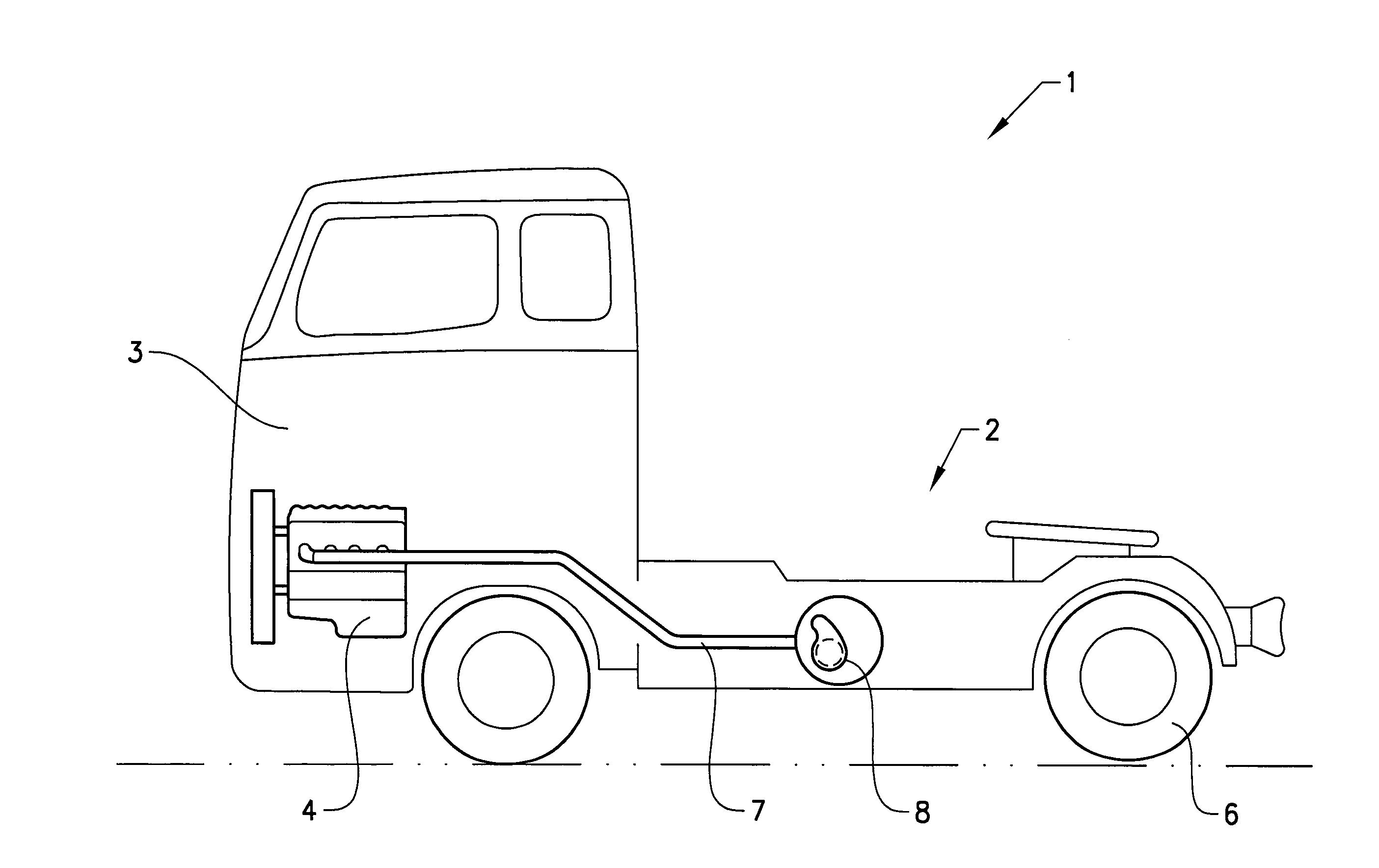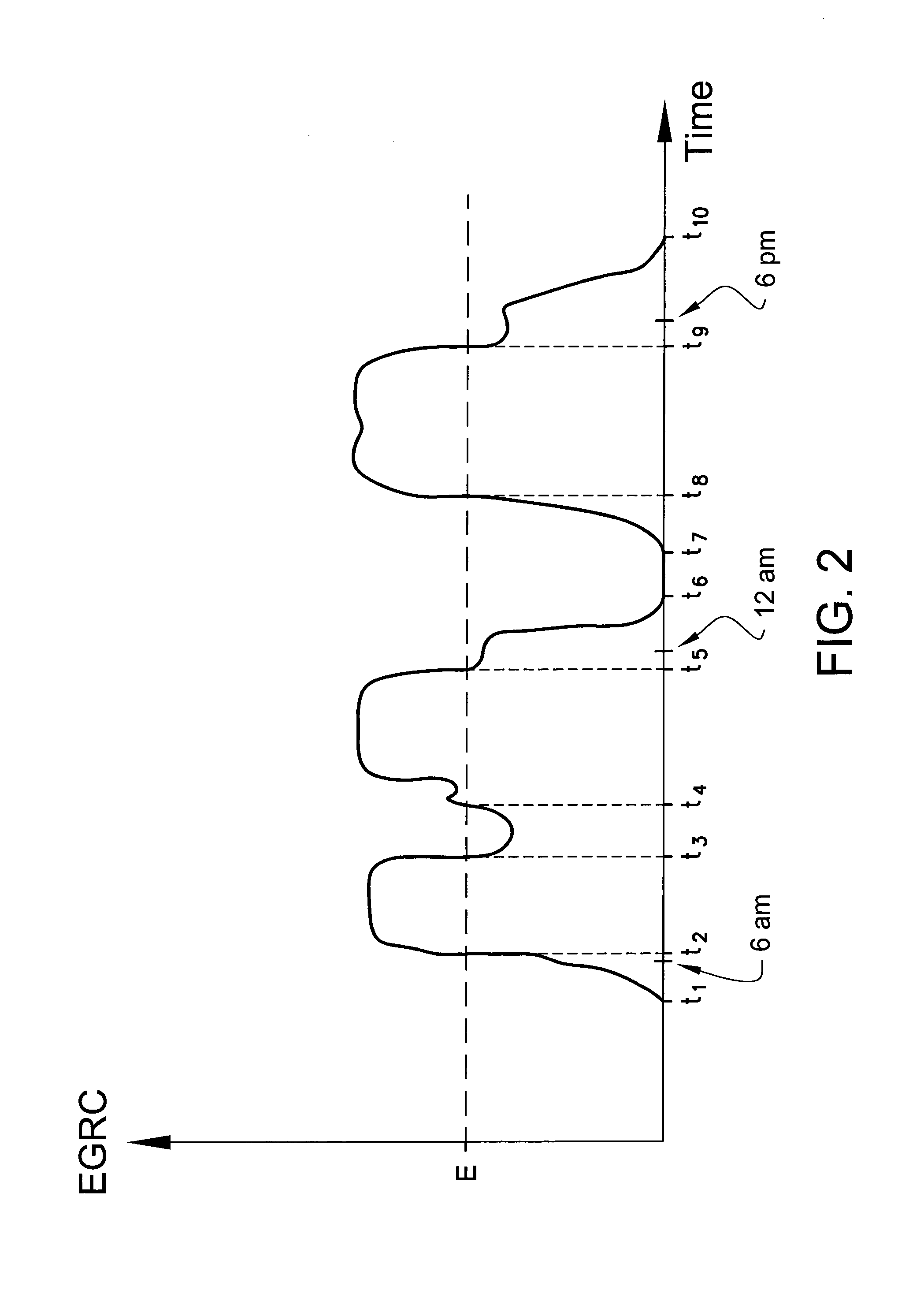Method for timing a regeneration process
a regeneration process and timing technology, applied in the direction of electrical control, exhaust treatment electric control, instruments, etc., can solve the problems of increasing fuel consumption, increasing thermal wear, and engine running a bit different, so as to improve the timing of the regeneration process, increase the success rate of the regeneration, and improve the effect of the regeneration process
- Summary
- Abstract
- Description
- Claims
- Application Information
AI Technical Summary
Benefits of technology
Problems solved by technology
Method used
Image
Examples
Embodiment Construction
[0061]FIG. 1 shows a commercial vehicle 1 in the form of a tractor unit. The commercial vehicle 1 comprises a chassis 2 and a driver's cab 3 mounted on the chassis. Underneath the driver's cab 3 is an internal combustion engine 4, which acts on the drive wheels 6 of the commercial vehicle 1 by way of a drive train comprising a clutch and a manual transmission or an automatic transmission. The internal combustion engine 4 comprises an exhaust gas system 7 with a first muffler 8 provided with an exhaust after-treatment system (EATS) including, for instance, a diesel particulate filter (DPF) connected to a tailpipe (not shown) which expels the exhaust gases to the atmosphere.
[0062]As an example, the inventive method is applicable to a vehicle of the type shown in FIG. 1 for carrying out regeneration of the DPF.
[0063]FIG. 2 shows, in a schematic view, an example of a visualized statistical probability function according to the invention. Time, as a portion of a 24-hours time period, is ...
PUM
 Login to View More
Login to View More Abstract
Description
Claims
Application Information
 Login to View More
Login to View More - R&D
- Intellectual Property
- Life Sciences
- Materials
- Tech Scout
- Unparalleled Data Quality
- Higher Quality Content
- 60% Fewer Hallucinations
Browse by: Latest US Patents, China's latest patents, Technical Efficacy Thesaurus, Application Domain, Technology Topic, Popular Technical Reports.
© 2025 PatSnap. All rights reserved.Legal|Privacy policy|Modern Slavery Act Transparency Statement|Sitemap|About US| Contact US: help@patsnap.com



